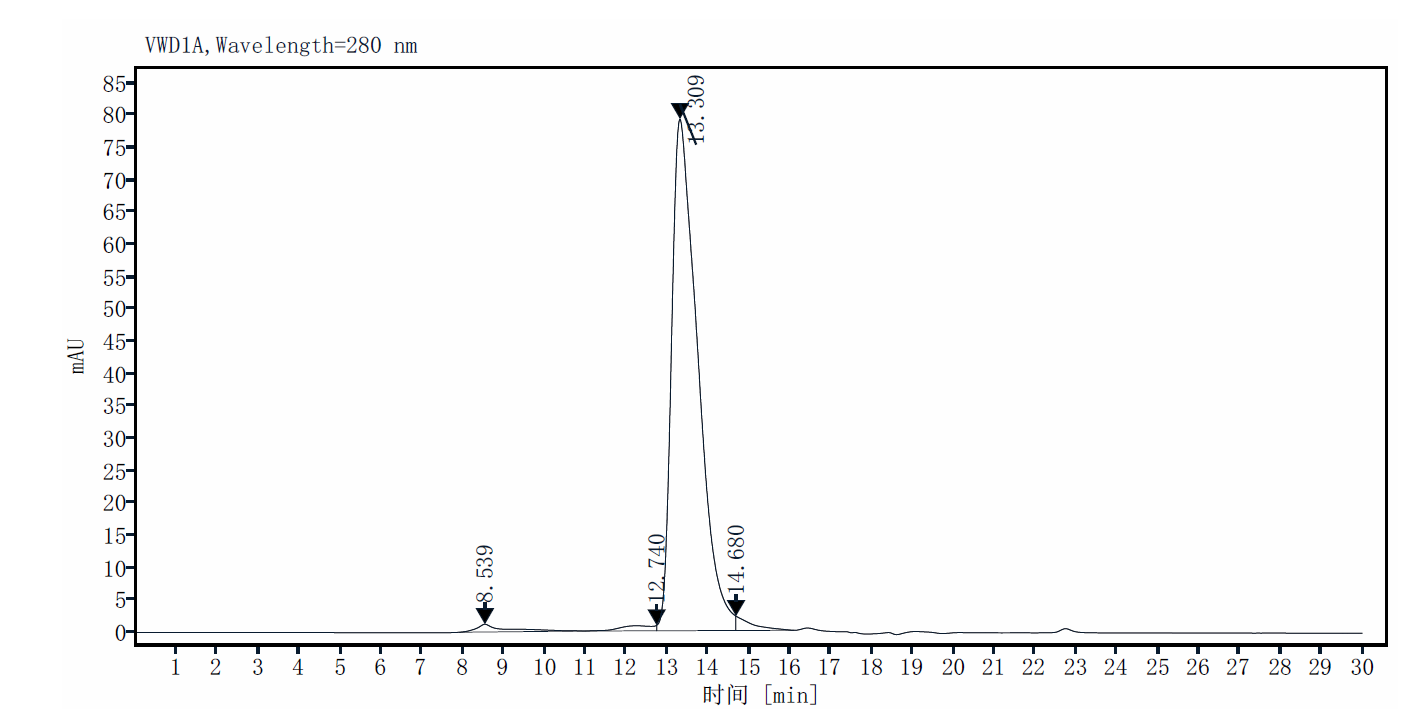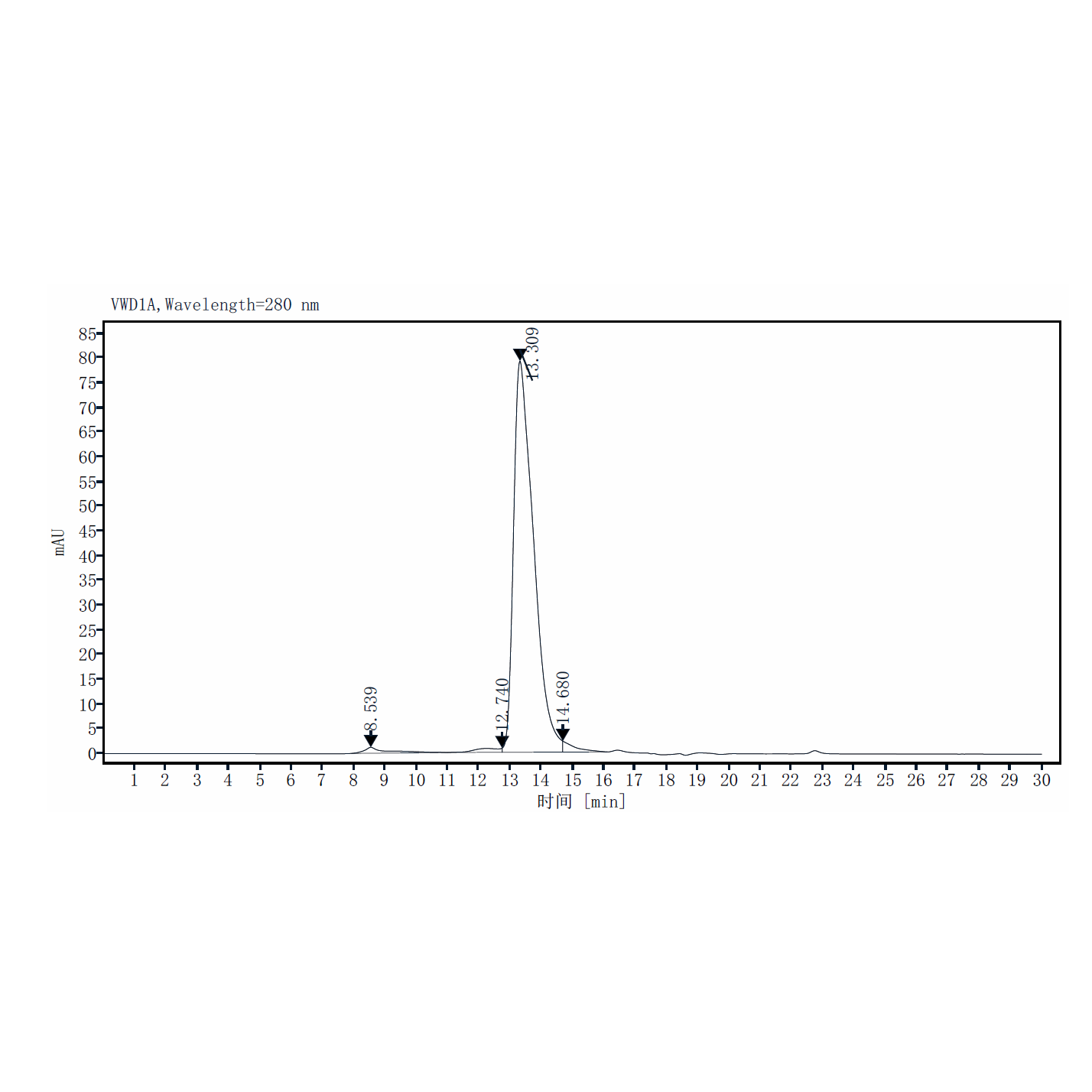1μg (R: reducing condition, N: non-reducing condition).
Product Details
Product Details
Product Specification
| Species | Human |
| Synonyms | Ubiquitin carboxyl-terminal hydrolase 14, Deubiquitinating enzyme 14, Ubiquitin thioesterase 14, Ubiquitin-specific-processing protease 14 |
| Accession | P54578 |
| Amino Acid Sequence | Pro2-Gln494 MHHHHHHHHPLYSVTVKWGKEKFEGVELNTDEPPMVFKAQLFALTGVQPARQKVMVKGGTLKDDDWGNIKIKNGMTLLMMGSADALPEEPSAKTVFVEDMTEEQLASAMELPCGLTNLGNTCYMNATVQCIRSVPELKDALKRYAGALRASGEMASAQYITAALRDLFDSMDKTSSSIPPIILLQFLHMAFPQFAEKGEQGQYLQQDANECWIQMMRVLQQKLEAIEDDSVKETDSSSASAATPSKKKSLIDQFFGVEFETTMKCTESEEEEVTKGKENQLQLSCFINQEVKYLFTGLKLRLQEEITKQSPTLQRNALYIKSSKISRLPAYLTIQMVRFFYKEKESVNAKVLKDVKFPLMLDMYELCTPELQEKMVSFRSKFKDLEDKKVNQQPNTSDKKSSPQKEVKYEPFSFADDIGSNNCGYYDLQAVLTHQGRSSSSGHYVSWVKRKQDEWIKFDDDKVSIVTPEDILRLSGGGDWHIAYVLLYGPRRVEIMEEESEQ |
| Expression System | E.coli |
| Molecular Weight | 57 kDa (Reducing) |
| Purity | >95% by SDS-PAGE&SEC-HPLC |
| Endotoxin | <0.1EU/μg |
| Conjugation | Unconjugated |
| Tag | His Tag |
| Physical Appearance | Lyophilized Powder |
| Storage Buffer | PBS, pH7.4 |
| Reconstitution | Reconstitute at 0.1-1 mg/ml according to the size in ultrapure water after rapid centrifugation. |
| Stability & Storage | ·12 months from date of receipt, -20 to -70 °C as supplied. ·1 month, 2 to 8 °C under sterile conditions after reconstitution. ·Please avoid repeated freeze-thaw cycles. |
| Reference | Front Pharmacol. 2022 Jan 5:12:801328. J Cell Physiol. 2021 May;236(5):3396-3405.Epub 2020 Nov 1 |
Background
Ubiquitin-specific protease 14 (USP14), a deubiquitinating enzyme (DUB), is associated with proteasomes and exerts a dual function in regulating protein degradation. USP14 protects protein substrates from degradation by removing ubiquitin chains from proteasome-bound substrates, whereas promotes protein degradation by activating the proteasome. Increasing evidence have shown that USP14 is involved in several canonical signaling pathways, correlating with cancer, neurodegenerative diseases, autophagy, immune responses, and viral infections. The activity of USP14 is tightly regulated to ensure its function in various cellular processes. Due to its intriguing roles in the stabilization of disease-causing proteins and oncology targets, USP14 has garnered widespread interest as a therapeutic target.
Picture
Picture
SDS-PAGE
SEC-HPLC



